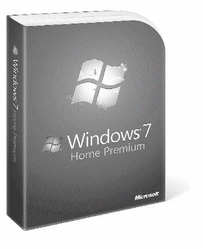
The new, more glitzy and sophisticated Windows 7.
NEW YORK (AP):
Next week, Microsoft is releasing Windows 7, a slick, much-improved operating system that should go a long way towards erasing the bad impression left by its previous effort, Vista.
If you've been holding off on buying a new computer, Windows 7 will be a good excuse to get back into the game. And if you've been weighing a Mac versus a Windows PC, you should know that 7 makes Windows more attractive, though not a clear-cut choice for everyone. Windows is now easier to use and better looking than it was before, while maintaining its core advantage of cheaper, more diverse hardware.
However, most PC users should not take the release of Windows 7 as a call to action, or feel that they have to run out and buy the software for use on a computer they're planning on keeping. The upgrade will most likely not be worth the time or money, much less the effort of hosting a Windows 7 'launch party' as Microsoft suggests.
Windows 7 will come in several versions. The one aimed at US consumers is Home Premium, which will cost US$120 if bought as an upgrade to XP or Vista. You can buy it as a download or on a disc. Beginning next Thursday, it will come installed on new PCs.
Here are some of its highlights:
Windows XP users have a lot more to gain by going to Windows 7. Vista introduced some great features, such as fast searches of the entire hard drive that, of course, are present in 7 as well. Unfortunately, upgrading an existing PC from XP to 7 is not easy.
After upgrading, users will have to reinstall all their programmes and find their files in the folder where Windows 7 tucks them away.
They may also have hardware problems. I found an old HP laser printer no longer worked with Windows 7. This isn't really Microsoft's fault or, specifically, a problem with the new operating system - HP just doesn't provide a 64-bit driver for that printer. A driver is a programme that tells a piece of hardware how to work with an operating system.
If you do upgrade, I would still recommend tackling that transition head-on by installing the 64-bit version of Windows 7, which doesn't cost more. Microsoft recommends a minimum of two gigabytes of RAM to run it.
If your computer runs Windows Vista, I think it's hard to justify spending US$120 for an upgrade. The new features are nice but hardly must-haves. For daily email and web surfing, they won't make much of a difference. Vista was much maligned when it arrived in early 2007 for being slow, buggy and annoying. Now, it really isn't that bad because updates have fixed a lot of the problems.
However, if you bought a Vista-based computer after June 25, you should be eligible for a free upgrade to Windows 7 from the manufacturer, and I suggest taking advantage of it. Your computer likely already is running 64-bit software, so there should be no problems with drivers, and the upgrade is much easier than one from XP. Windows 7 can keep your installed programmes and your files in their old folders.